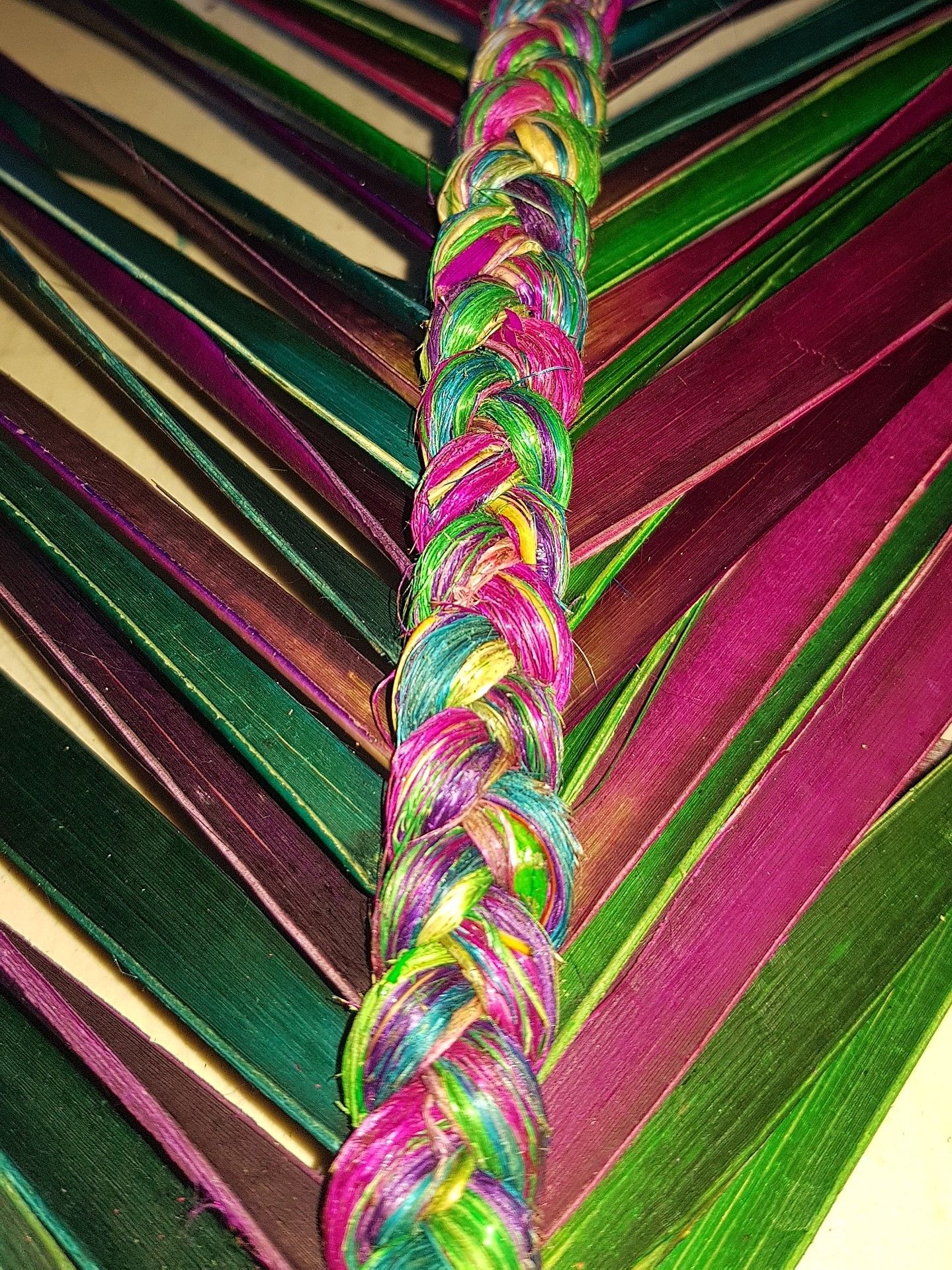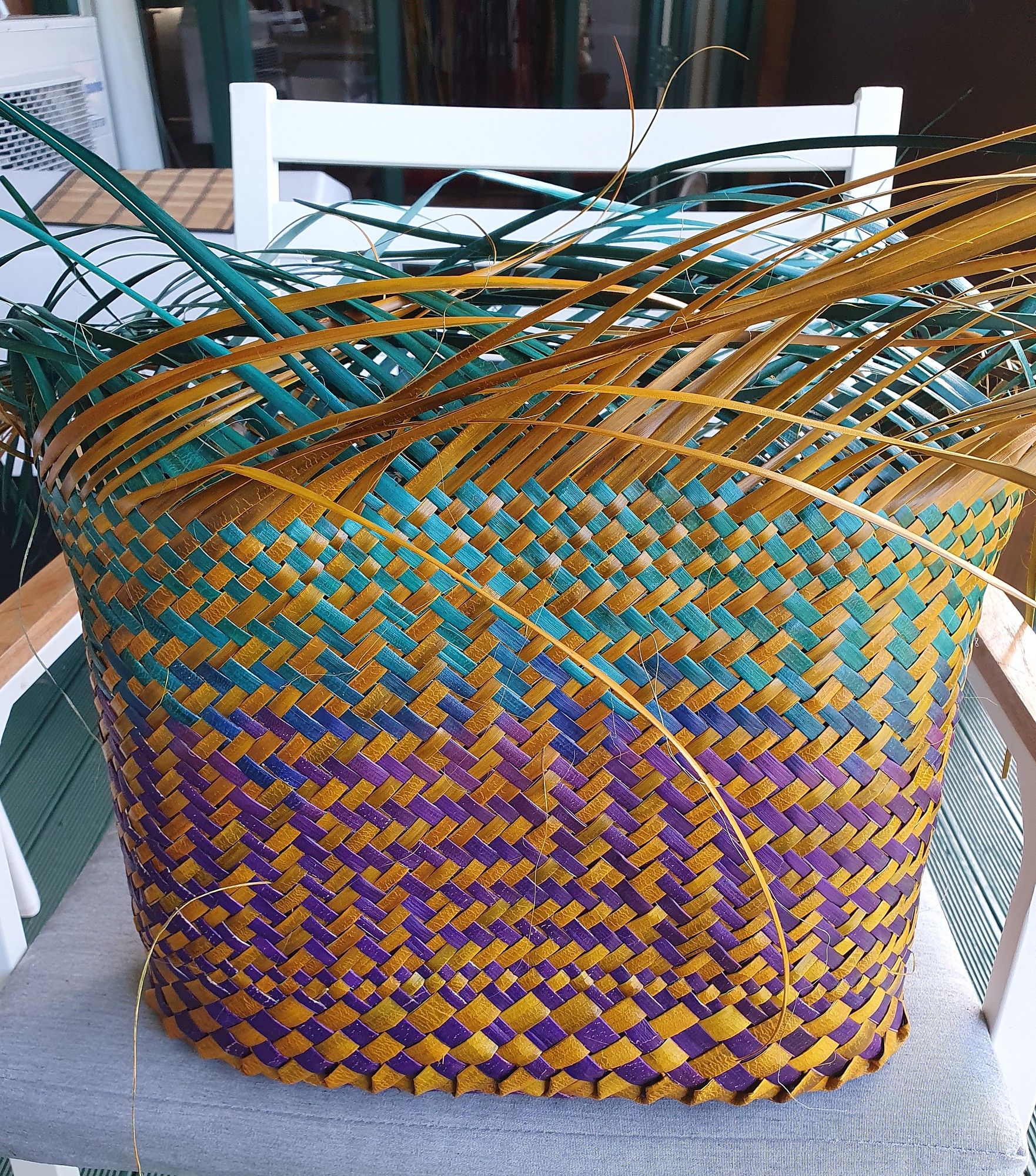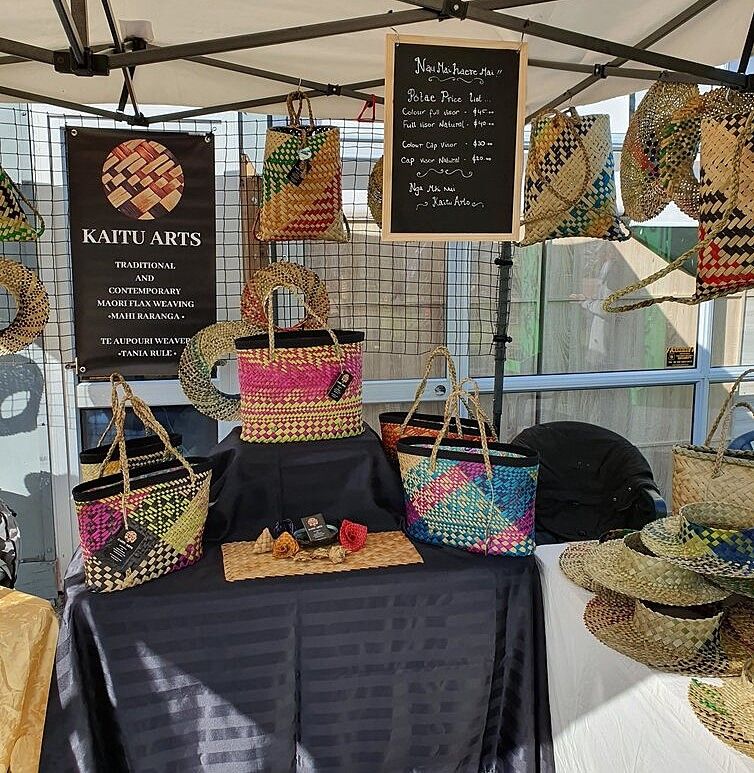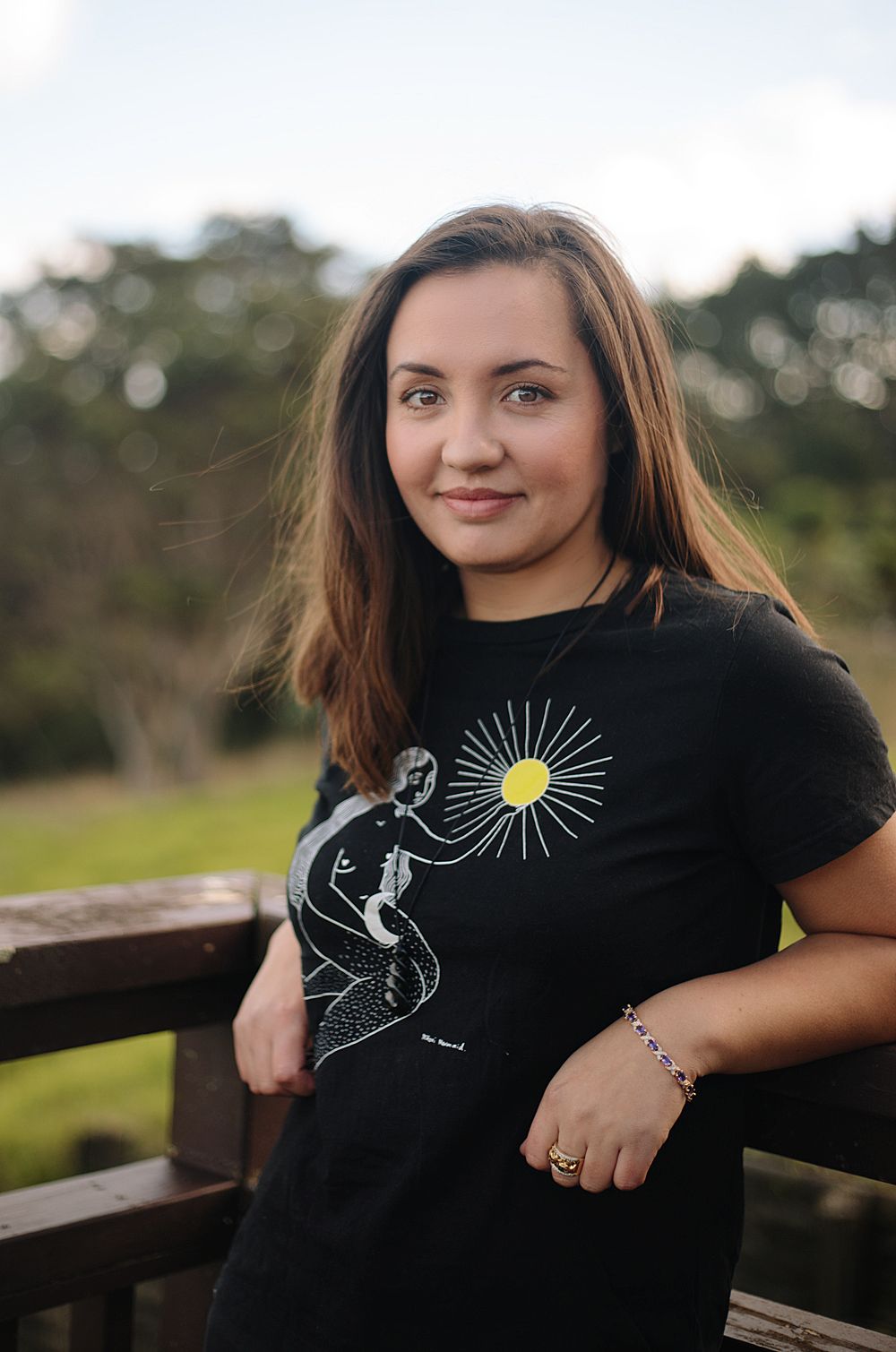Off The Beaten Track with Tania Rule
Ataria Sharman, Kaupapa Māori Editor at Pantograph Punch, has a cuppa with Te Aupouri weaver Tania Rule.
In this new series, our editors at The Pantograph Punch venture out of the big cities and into the regions of Aotearoa to kōrero with some exciting creatives. In the first of these, Ataria Sharman sits with weaver Tania Rule to talk about her nan, her weaving process and other Indigenous arts.
Ataria Sharman: Tell me a bit about yourself.
Tania Rule: I was taught raranga by my nan, Kerewai Conrad. Nan went to Queen Victoria Māori Girls School and that was where she learnt her raranga, tokotoko and piupiu. Even when I was around, Nan was still tutoring ex-students from that school and I got to be in those classes as well. We would dig the peat for the piupiu dye and then bury the piupiu in stockings in the middle of the swamp – it was old school.
We lived in Auckland but every summer holidays I would beg my mum and dad to send me up north with Nan. I was one of Nanny’s little tonotono and the only girl out of all my cousins. One morning I went with Nan in the old Land Rover. We drove up Ninety Mile Beach and she showed me how to harvest flax from the sand dunes. I remember thinking “this is the bomb” and I asked her if we could go back out again. It was an adventure and I loved it.
I’ve always felt proud to have been taught by Nan. Everyone always looked up to her – she was our matriarch. Quite a few of my other cousins were taught by her but we all have our own style of weaving.
AS: What is it about weaving that you love?
TR: I’ve always been a bit of an introvert and thought that if I can sit here and have something to do – weave – then I won’t have to mingle or hang out with the other kids. I didn’t like doing what everyone else did. I preferred to go to hui with Nan than stay at home, probably because she spoiled me when I was the only moko.
Sometimes I forget other Māori haven’t had the same experiences that I did. When they see my weaving people ask me which kura I went to, or which school taught me raranga and I tell them that I was taught by my nan. At the same time I used to think, “Why didn’t your nanny teach you?” It wasn’t until my late 20s that I realised other whānau weren’t given the opportunity I was to learn. Although not everyone will want to learn weaving or have a passion for it, over the years I’ve realised that a lot of Māori haven’t had the opportunity to make that choice for themselves. They just couldn’t learn it because there was no one to teach them.
A multitude of colours. Photo: Kaitu Arts.
AS: Do you teach others yourself?
TR: I’ve had friends ask if I can teach them, they’ll tell me, “I’ll come and weave” and I tell them we need to go out and harvest the flax and they’re like, “What do you mean we have to wade into a swamp?” Weaving is a real long process, it’s not like just going to Spotlight and buying fabric. There’s tikanga that you have to learn.
Raranga isn’t for everyone. I’ve always had a passion for it and remember being at the beach as a kid and seeing my cousins whipping up pipi kete and thinking how amazing it was they could just do that.
AS: What does weaving mean to you?
TR: It reminds me of home, that’s what it is for me. It’s like that smell when I cut the flax, the smell of the harakeke. When I harvest the flax I can picture my nan whistling in the background.
AS: Where do you do your weaving?
TR: In summertime I harvest and prep outside but in winter it’s hard to harvest so I mostly weave at home. I like to be by myself when I’m weaving, I find it hard to focus when there are people around me. When people are home they ask, “How do you do that?” and I’m just like, “Let me do my work.”
People think I’ve got a big studio but I don't. I just weave in the house, in the lounge. I’ve got a table and I sit at that and I’ll have some music playing and the television going just in case I start to wander off. There’ll be some fabric hanging out so I can look for the colours. Even though there is a lot going on, I can’t work in messy conditions, I need everything set up right.
I feel most in the mood to weave when I’ve got other things to do that are more pressing. Like when I’m at work, I just want to weave. Then when I have to weave, I just want to lay in bed and watch the day go past. Every weekend I’m weaving, maybe not the whole time but definitely weaving.
I live by the water in Helena Bay. Water is good for clearing. Even yesterday, when the weather was shit in the morning, later on it cleared up with a beautiful blue sky so I got all my flax out. Then I put my gumboots on and ran straight down to the beach.
I like to have a tutu, pull something apart just to see how it was made
Tania weaving one of her kete. Image: Kaitu Arts.
AS: Tell me about the weave you use for your creations.
TR: My weave is a pipi kit. With my patterns I just like to see what happens. I like to have a tutu, pull something apart just to see how it was made. So I come up with my patterns by having a play – being a tutu.
I’ve always got to have a little journal or book with me. The first thing I tell anyone who wants to get into weaving is to carry a notebook everywhere because you never know where you might be when inspiration comes. Odd things like putting zips on the kete. My journal at the moment is a black Mareikura diary by Tuhi Stationery. I use it to write down specific colours or notes like, “I need to get more blades for harvesting.”
Sometimes weird things happen to me. Like I’ll have a dream about a kete design and then I’ll wake up and think, “Fuck how did it start?” and then I’ll start to remember and I’ll put together the kete from my dream colour-by-colour and weave-by-weave.
AS: What about the dyeing process?
TR: The harakeke dyeing process takes a whole day and I choose the colours by how I’m feeling, what I’m in the mood for. I’ll do a whole lot of different colours at the same time. Just like my patterns, with the colours I like to have a tutu with them to see what I can come up with.
I get inspiration for colours from nature, like the ocean and manu. The other day I was coming back late from the beach and saw a morepork. This inspired me to weave a brown and black kete with yellow.
Sometimes I’ll set myself little challenges and see how far I can push an idea. I enjoy throwing oddball colours together, like a bright orange with a teal, just to see how it goes. You know the iridescent blue of a tūī? I’ll set myself a challenge to dye the flax a sharper blue like that. Or I’ll see a piece of driftwood or a particularly stunning shell and I’ll try to recreate those colours.
The harakeke dyeing process. Image: Kaitu Arts.
AS: How do you stay inspired?
TR: I love bantering with like-minded people, creative people, and it doesn’t matter what their art is because we use the same kinds of processes. Talking to people like that gives me a boost – potters, ceramic artists and knitters.
They’ll say things like, “Oh my God I stayed up to 2am, I couldn’t get it out of my head,” and then I’m like, “Me too!”
AS: What is your favourite thing to weave?
TR: Wall hangings are my favourite. Time-consuming too. I’ll only make them once in a while, but when I do I pour all of my creative energy into them. It’s hard for me to make wall hangings in winter because the long flax I need is in the middle of a swamp – it's so wet.
AS: What about the process of harvesting?
TR: Harvesting is at the beginning of the weaving process and I find it very therapeutic. The best flax near my place is up this hill and I get this kind of hunter–gatherer buzz when I climb up, harvest the flax and tramp back home. A real sense of satisfaction and I enjoy the time out by myself, the time in nature.
Before I start to weave a kete, I like to have everything in order. I need to know there is enough dye and enough flax and if I don’t it burns in my head. Like the other day I was about to start but then thought, “God, I really don’t have enough flax for this.” So I went out and harvested a whole load first.
Mum used to get a hiding for speaking te reo and my Pākehā dad got a hiding for wanting to learn carving with his Māori mates
AS: Is weaving still passed on in your whānau?
TR: My mother is the youngest out of 13, a big extended whānau. If we were all still living back at home, the knowledge would be passed down to our nieces and nephews. Up home there is a slower pace than in the cities. But at the moment everyone is spread out and in the big cities, so the knowledge isn’t being passed down. It’s a bit sad but we are fortunate; a lot of things to do with toi Māori are starting to be revived and accepted.
I see our young Māori artists getting out there and it inspires me. I see them on Facebook and social media – they’re not whakamā, these young ones. I think it’s because they didn’t grow up being frowned on for being Māori. I love to see them, these young Māori girls make it so comfortable to be Māori. They are proud to be Māori and they sing away and make it the norm for everyone else. I try to awhi and support that as much as I can, however I can.
Even when I was at school in the late 80s, I remember feeling proud to be Māori and proud of our Māori art. But then I was told to tone it down, to tone my excitement down.
Being both Pākehā and Māori, I remember my Mum telling me how she used to get a hiding for speaking te reo and how my Pākehā dad got a hiding for wanting to learn carving with his Māori mates. It happened on both sides to discourage the culture.
I’ll never forget my dad telling me that he begged my mum not to give us Māori names because he couldn’t live with us being picked on as children. Now he sees all these Māori with Māori names talking fluent reo and the other day he said, “If that had happened back in those days (speaking reo Māori), they would’ve been told to shut up.” I think it’s important to remember that.
Nowadays, we are becoming more and more accepting of Indigenous knowledge. And it is so exciting to see!
A collection of Tania's creations. Image: Kaitu Arts.
AS: You mentioned your visit to an Indigenous conference, tell me about that.
TR: My cousin and I went to a Native American and Indigenous Studies Conference at Waikato University. During the conference, some of the American Indigenous women were showing us their skirts for the pow wow and my cousin noticed they were made of synthetic fibres and sequins. So she asked why they were making their skirts from synthetic fibres instead of their native fibres.
They told us that when they were moved off their ancestral lands, the lands they were moved to had nothing on them. No plants to harvest, not even rights to water and they aren’t allowed to harvest shells or natural fibres from lands outside the reservation as they might be arrested. So they had to make do with what they could. They kept their culture going on the bare minimum and started using sequins and other man-made products.
Imagine not being able to harvest flax or take little things like shells. Here we take it for granted. I can go pick flax down the road. Just imagine a cop pulling you over for harvesting natural fibres and asking you for your Indigenous passport. For some Indigenous peoples art is life and death – they have to fight for their art.
Feature image: Ataria with Tania and her kete in the InnoNative Pop-Up in Whangārei, Te Tai Tokerau. Image: Minnie-May Roberts-Tenana.





